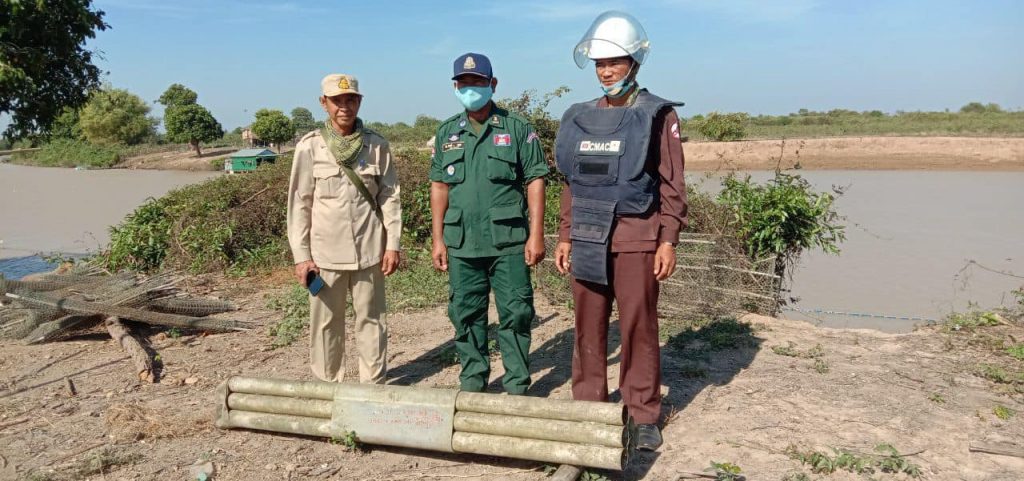Kampong Chhnang province: Fisherman pulled up a pipe from the river, and thinking they had found treasure, were very happy. But when they looked closer, they saw there was a bomb inside, became scared and ran to alert the authorities to contact the CMAC, according to Heng Ratana, director general of the Cambodian National Mine Action Authority (CMAC).
Mr. Heng Ratana confirmed that the bombs found by the fishermen were CBU-14 US cluster munitions dropped during the 1965-1975 war.
*It is likely these were dropped from a AD-1 SKYRAIDER pre -1970.
The SUU-14A/A Dispenser consisted of six metal tubes strapped together. Each of the tubes were filled with submunitions. The submunitions would be ejected out the rear of the tubes while flying over the target area.
A color coded stripe just behind the forward end cap would indicate the type of submunition being carried in the dispenser. The yellow stripe on this dispenser indicates that it is carrying CBU-14 or CBU-25 Bomblets (see below).
Dimensions: Length: 6.7 ft. Width: 9.4 in. Height: 11.3 in.
“The 56th Special Operations Wing was discontinuing the use of CBU-14s and receiving CBU-25s in September 1970. Both cluster bomb units used the suspension unit, universal (SUU)-14 dispenser, filled with submunitions. Neither was a chemical munition. The CBU-14 was designed for use against light materiel targets, such as trucks. The CBU-25 was an anti-personnel weapon. The CBU-14s had a high percentage of duds. The CBU-14 sometimes hung undetonated in trees, providing the enemy with a source of effective antipersonnel munitions for use against friendly troops in the form of booby traps.
The 56 SOW history in September 1970 reported: “Other problems included the unforeseen change in ordnance types. When the shipment of CBU-25 arrived, the CBU Storage Area was filled to capacity with CBU-14 leaving no room for storage. The change was due to the characteristics of CBU-14 which sometimes hangs undetonated in trees, providing the enemy with a source of effective antipersonnel munitions for use against friendly troops in the form of booby traps. . . . Due to the late arrival of CBU-25 ordnance (September) follow up action was not available for this report. However, action was expected during October to request removal of CBU-14 from NKP.”





